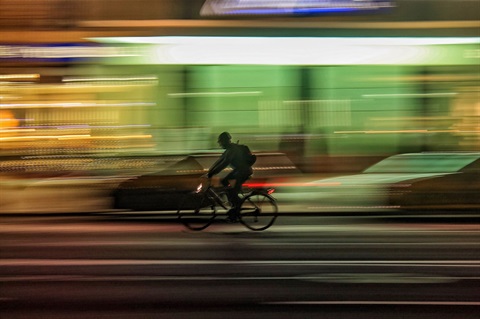Walking and biking safely when Daylight Saving Time ends
Published on November 01, 2023

Nov. 5 marks the end of Daylight Saving Time, when we set our clocks back and gain an extra hour of sleep. Unfortunately, this also marks the start of shorter days and longer nights, which can pose a safety challenge for pedestrians and cyclists. With reduced daylight hours, it’s important to remain aware of your safety while navigating local streets and sidewalks. This article provides a few tips to keep you safe as you walk and bike after the end of Daylight Saving Time.
1) Wear bright or reflective gear – Visibility becomes an even bigger concern following the time change, when it gets darker earlier in the day. For this reason, both cyclists and pedestrians should consider wearing bright or reflective clothing and accessories. Reflective tape and stickers can be easily affixed to clothing at an affordable price.
2) Use lights and reflectors – Bicyclists should ensure their bike has a white headlight up front and a red taillight at the rear, and that both are charged and properly working. To further enhance your visibility, attach reflectors to your bike, helmet and bags. Remember that having the proper lighting and reflectors on your bike is required by the California Vehicle Code.
3) Stick to well-lit routes – Plan your trip in advance and identify routes with adequate street lighting. Additionally, familiarize yourself with potential hazards, such as potholes or uneven surfaces, that may be harder to spot in the dark.
4) Be mindful of road conditions – Besides darkness, fall also brings wet roads and slippery leaves. When biking in wet weather, cyclists should reduce their speeds and keep a safe distance from cars and other cyclists. Pedestrians should similarly use caution when walking along sidewalks or crossing streets covered in leaves.
5) Walk or roll with a buddy – Walking or biking is safer in numbers, as drivers are more likely to notice a group of people.
6) Remain alert – Always keep your eyes and ears open to your surroundings and avoid distractions such as using your phone. When it’s dark, the ability to hear approaching vehicles is even more critical to your safety.
7) Stay informed – Keep an eye on weather forecasts and reconsider biking or walking during inclement weather when visibility is even more compromised.